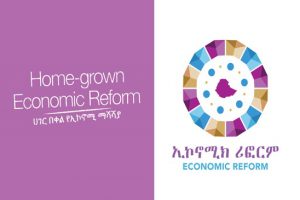
The clothes people wear usually reflects the climate and landscape of the particular region they live in. Ethiopia’s landscape and climate varies from high plateaus to lowlands, and from very dry to very wet respectively. This has a major effect on Ethiopian traditional clothing. Generally, highlanders wear heavy clothing to protect themselves from the low temperatures, whereas people in the lowland plains, where it can get very hot, wear light clothing.
While there are a wide range of clothing traditions in Ethiopia, among which is the beautiful white woven cotton clothing seen in many parts of the country. This traditional women’s clothes, the long sensual dresses accompanied a bodice and sleeves, are called habesha kemis/dress.
Habesha Kemis is usually made from white cotton fabric called shemma, which is a cotton fabric, woven into long strips and then sewn together. Sometimes bright yarns are woven into the fabric for an elegant effect.
It takes two to three weeks to make enough fabric for a dress. It is possible to accentuate the dress with embroideries of bright colors on the neck, wrist, bottom, middle and top of the dress. Then, around the waist women wear a light shawl, a scarf called a netsela, which matches the fabric and pattern of the dress. It can also be worn on the hair or the shoulders.
Million Eshetu, supports his family by making traditional clothes with his colleagues. He rented a shop owned by the government around Shiro Medda.
He has been in the traditional dress making business for almost six years now. “Besides making a living out of it, we are also promoting our culture,” he says.
Relatively in the previous time, the supply and demand of the Ethiopian traditional attire is increasing. People of all ages are showing interest to be dressed in traditional clothes. The introduction of modern technology has also made it easier to produce traditional clothes in bulk.
In addition, as to him, social media like facebook, telegram, and twitter are helping producers to advertise and promote their products to customers.
“Nowadays, fashion designers are also creating new designs of the traditional clothes to fit the modern life style. That is also improving the market share,” Million says.
Particularly, Ethiopian women prefer to wear traditional clothes during holidays, wedding ceremonies, and several other special occasions. The tradition of wearing traditional clothes with the albaso hairstyle, which is common among communities in Amhara and Tigray regions, is reviving, he said.
Because of the rising demand, the habesha kemise industry is rising. New designs that blend modern fashion with the traditional ones such as admas, finchetua, farida deglel are also helping the industry to flourish.
Ethiopian traditional clothing is currently worn on a daily basis by many people in the countryside. In the cities and large towns, western styled clothes are the customs. However, many older people in cities and large towns still wear traditional clothing, he says adding, in addition, some Rastafarian women from the Africa Diaspora also wear in Habesha kemis.
Netsela is the other traditional cloth. It is usually worn by orthodox Christians when they go to church. It is also worn during funerals and mourning. For mourning occasions, the netela’s embroidered end is wrapped around the face. When it comes to religious occasions or activities, the netela is wrapped over the back and shoulders and the embroidered end is folded over the right shoulder, Million expressed.
Gabi is the other Ethiopian traditional cloth. The gabi is not really a scarf in the normal sense, but more like a light blanket. It is thicker and warmer than the netela and usually worn by men but women can use it at home to keep warm. It is used by elders when they go to church, in the conflict resolution or negotiation and when they go to someone’s house to ask for marriage (lijihn lelije ). And also gabi is given as a gift (tsilosh in amharic version) for women’s mother and father from men’s family in the time of marriage, Million says.
On the other hand, Ethiopian men wear long shirt with white collars, sweaters, shawls and socks at knee height.
Abraham Anjilo is another seller of traditional clothes. He says the demands for traditional clothes is increasing, but considering its beauty and prolonged existence, this is not enough.
“The change so far has come about by the unorganized efforts of individuals. The government needs to create conducive environment and market linkage to promote the industry as it would have essential economic advantages to the country,” Abraham says.
The Ethiopian Herald February 14 /2019
BY ESSEYE MENGISTE





